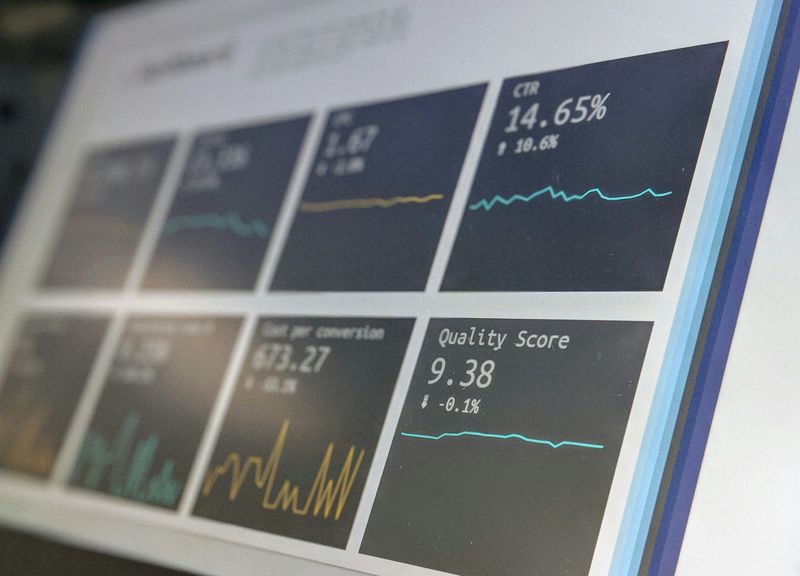Choosing the Right Sponsorship Request Evaluation Platform
What to look for in a sponsorship proposal evaluation platform—from tracking features to sponsor relationship tools—so your team can scale smarter.
 Published at: Updated at:
Published at: Updated at:Key Features to Look for in a Sponsorship Request Evaluation Platform
Choosing the right evaluation platform is especially important for organizations managing local or smaller-scale sponsorship requests. When investment levels are modest, efficiency, clarity, and alignment become even more critical. Here are the key features to look for:
Request Tracking: Staying on top of each request’s progress—especially when volume is high—helps ensure no opportunity is missed. Look for platforms that offer real-time tracking, status updates, and feedback visibility to support a transparent and coordinated review process.
Integrated Metrics: Even for smaller sponsorships, meaningful evaluation matters. Platforms with built-in tools to assess elements like brand fit, local engagement, and asset alignment provide valuable perspective. As emphasized by Lumency, measuring what matters ensures decisions reflect both impact and efficiency.
Sponsor Relationship Management: Building long-term relationships at the local level can unlock repeat value. Features such as automated follow-ups, messaging tools, and reminder systems help teams maintain consistency in communication—essential for fostering trust and future collaboration.
Intuitive Dashboards: A user-friendly dashboard helps teams quickly assess incoming requests, identify priority opportunities, and track performance indicators at a glance. For local investments, this clarity supports faster decision-making and better use of limited resources.
Reporting Capabilities: Access to historical data, even on smaller sponsorships, can yield insights that inform better choices. Customizable reporting tools help teams understand what worked, where value was delivered, and how to optimize similar opportunities going forward.
Collaboration Features: Local sponsorships often involve input from various departments or community-facing roles. Collaboration tools—such as document sharing, internal comments, and task assignments—make it easier to involve the right voices and coordinate evaluations efficiently.
Integration with Other Tools: Seamless connection to your CRM, budgeting tools, or marketing platforms streamlines processes and reduces duplication. Especially when resources are tight, integrated systems can ensure local sponsorships align with broader marketing strategies.
Book a Demo Today!
Discover how Touchstone™ can simplify your sponsorship review process. From automated scoring to side-by-side proposal comparisons, our platform helps brands make faster, smarter partnership decisions—with less manual work.
Schedule My Demo
What metrics should you consider in Sponsorship Request Evaluation?
When reviewing local sponsorship requests, focus on simple, practical metrics that reflect community impact and brand alignment:
ROI (Return on Investment): Evaluate whether the sponsorship delivers meaningful value relative to its cost. This doesn’t have to be purely financial—consider brand exposure, audience engagement, or impact on brand health as part of the return.
Audience Reach: Consider how many people the sponsorship is likely to connect you with. Look at potential touchpoints like local event attendance, neighborhood newsletters, or social media reach to gauge overall visibility.
Engagement: Think beyond just reach—how actively will the audience interact with your brand? Metrics like participation levels, social media shares, or post-event feedback can help measure how well the sponsorship captures attention and drives action.
Brand Visibility: Review how and where your brand will appear. Whether it’s on banners, programs, websites, or social posts, strong placement across multiple touchpoints increases recognition and reinforces your presence in the community.
Community Perception: Use brief surveys or informal feedback to understand how the sponsorship resonates with the local audience. Does it feel authentic? Aligned with community values? Positive perception can strengthen both trust and brand affinity.

How Can Technology Simplify Sponsorship Request Assessments?
Technology can make evaluating local sponsorship requests more manageable and efficient by simplifying key steps in the process. Here’s how the right tools can help:
Centralized Requests: Instead of juggling email threads or scattered files, a centralized platform allows you to collect, store, and review all sponsorship submissions in one place. This makes it easier to stay organized and ensures nothing gets missed.
Simple Scoring Tools: Evaluation platforms often include built-in scoring systems that let you compare proposals against set criteria—such as audience fit, visibility, or community relevance. These tools streamline decision-making and help ensure fair, consistent evaluations.
Automated Responses and Declines: For requests that don’t meet your basic criteria, you can set up automated replies or pre-written decline messages. This saves time, reduces back-and-forth, and keeps your communication professional, timely, and respectful.
Real-Time Team Input: When decisions involve multiple people, collaborative features like shared dashboards, comment threads, and status updates keep everyone aligned. Your team can review proposals together without delays or confusion.
Quick Reporting: Use built-in reporting tools to generate summaries of past requests, highlight trends, and assess what’s working. These insights can support future sponsorship planning and help refine your approach over time.
How to Effectively Assess Local Sponsorship Requests
A clear, consistent process can help your team identify the most relevant and impactful local sponsorship opportunities. Here's how to approach it effectively:
Set Clear Criteria: Before reviewing any proposals, define what success looks like for your brand. Are you looking to boost visibility in a specific neighborhood, engage with a particular community group, or drive foot traffic to a local store? Establishing these goals upfront will guide smarter decisions.
Evaluate Key Metrics: Use your platform’s built-in tools to assess proposals based on simple but essential metrics—such as projected ROI, audience relevance, and expected engagement. For smaller sponsorships, even basic indicators can help highlight the strongest fits.
Compare Options Thoughtfully: If you receive multiple requests, weigh each one against your goals and resources. Consider the cost, potential impact, brand alignment, and whether the organizer has a history of successful execution. Comparing side-by-side can clarify where your support will go furthest.
Involve the Right Team Members: Bring in colleagues from marketing, community engagement, or sales to weigh in on proposals. Different departments can offer insights you may not have considered and help ensure the sponsorship aligns with broader business goals.
Communicate Clearly and Promptly: Make it a priority to respond to all submissions—whether it’s an acceptance, a request for more information, or a polite decline. Clear, timely communication strengthens your brand’s reputation and keeps the door open for future opportunities.
What factors influence the decision-making process?

Several simple factors can help your team assess local sponsorship requests with greater clarity and confidence:
Brand Fit: Start by asking whether the opportunity aligns with your brand’s mission, values, and community focus. The strongest sponsorships feel authentic—when your presence at an event or initiative makes sense to both you and the audience.
Budget Limits: Keep your budget front and center. Local sponsorships can vary widely in cost, so it’s important to focus on opportunities that offer meaningful impact without overextending your resources.
Past Results: Leverage past experience. If you've supported similar events or partners before, take note of what delivered value and what fell short. This history can provide valuable context for making smarter decisions now.
Local Relevance: Consider how well the sponsorship connects with current community interests, cultural moments, or neighborhood priorities. Relevance adds depth to the partnership and increases the likelihood of positive engagement.
Future Potential: Don’t just evaluate the short-term activation—think about whether this partnership could grow over time. A one-time request that opens the door to a longer-term relationship can yield compounding value and greater impact.
Enhancing Sponsorship Relationships with the Right Tools
For brands investing in local sponsorships, strong partnerships with partners are key to maximizing impact. The right tools can help you stay engaged, measure performance, build lasting value, and take control of difficult relationships.
Maintain Regular Touchpoints: Plan regular check-ins with partners as consistent communication keeps everyone aligned and helps you stay involved throughout the sponsorship lifecycle.
Request and Provide Feedback: Use feedback platforms or post-event surveys to share your input and request updates on performance. Open dialogue builds trust and helps both sides improve future activations.
Track and Review Performance: Leverage reporting tools to access data from your partners—such as audience reach, impressions, and engagement. Reviewing this information helps you understand ROI and optimize your sponsorship strategy.
Ensure Recognition and Visibility: Monitor how your brand is represented across event touchpoints and digital channels. Tools that track placement or impressions can help ensure your brand presence meets expectations and is delivered consistently.
Equip Your Team and Partners: Provide organizers with brand assets, usage guidelines, and key messaging using shared folders or sponsorship toolkits. Ensuring your partners have what they need helps maintain brand consistency and elevates the execution.
How to maintain long-term relationships with sponsors?

Strong, ongoing relationships with your sponsorship partners can lead to better results, smoother activations, and more meaningful community impact. Here’s how brands can nurture those partnerships over time:
Engage Thoughtfully: Tailor your interactions to each partner’s focus and style. Regular check-ins, collaborative planning, and asking for their input show that you’re invested beyond just the transaction.
Reinforce Mutual Value: Don’t wait for year-end wrap-ups—share how the sponsorship is delivering results along the way. Ask for performance updates and highlight the value your brand brings to their audience as well.
Stay Adaptable: Be willing to revisit terms or expectations as needs shift. Showing flexibility during changes—whether budgetary or strategic—can build trust and signal long-term commitment.
Celebrate Wins Together: Acknowledge shared successes—whether it’s event turnout, social engagement, or media coverage. Small gestures like thank-you notes, social mentions, or joint recaps help reinforce the relationship.
Support Their Ecosystem: Look for ways to connect with other partners or initiatives in their network. Being part of their broader community adds value and positions your brand as a collaborative, engaged sponsor.
Frequently Asked Questions About Sponsorship Proposal Evaluation Tools
What are the key benefits of using a sponsorship evaluation platform?
The right tools can make a big difference, especially for local sponsorships, . Here’s how:
Simplified Review Process: Evaluation tools help you organize and review multiple requests without getting overwhelmed—especially when working with limited time or resources.
Better Team Collaboration: With shared access and simple workflows, your team can easily weigh in on proposals and align on decisions.
Clear, Useful Insights: Built-in metrics and scoring features help you make decisions based on facts—not just gut feeling—while keeping your brand and community goals in focus.
Time Efficiency: Automating basic tasks like tracking, scoring, and responding to requests saves time and allows your team to focus on higher-value work.
Stronger Local Partnerships: Timely communication, status updates, and transparent decisions help build trust with local partners and encourage repeat collaboration.
Using an evaluation tool that fits your local needs helps you stay organized, make fair decisions, and build lasting relationships in your community.

Joywyn Daniel is the Head of Analytics, Insights & Research at Lumency, a global sponsorship marketing consultancy trusted by leading brands such as Pepsico, Nestle, and Canadian Tire. With over 13 years of expertise in consumer and fan insights, Joywyn plays a pivotal role in shaping Touchstone™, Lumency's innovative sponsorship management platform. Passionate about translating complex data into actionable recommendations, he shares his knowledge, tips, and experience to help brands streamline decision-making and optimize sponsorship strategies.





